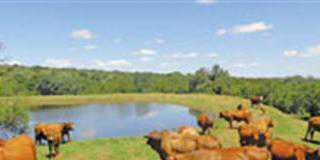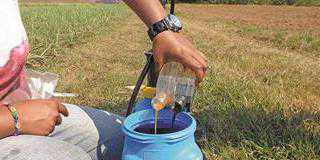Adding beef cattle manure to polluted former mining sites can contribute significantly to their recovery, according to US researchers. Agricultural Research Service soil scientist Paul White reported success on a site in an area where zinc and lead had been mined for a century, leaving a legacy of lead-contaminated acidic soil, toxic smelter sites, tailings and thousands of hectares of land with little or no vegetation.
“Soil microbes recycle nutrients from soil organic matter, and this is important for vegetation growth. But there’s limited soil organic carbon at these sites, so we added carbon via compost to get the process going,” explains White. The research
team added 44,8t/ ha and 268,9t/ha respectively of beef cattle manure to 1m x 2m test plots, omitting manure on the control plots.
They then sowed switchgrass seed in all the plots and took soil samples five times over two years. White found that soils in the high-compost plots had significant increases in pH, plant-available phosphorus, total nitrogen, carbon and available water. The team also noted greater microbial biomass, enzyme activity and nitrification potential, all of which created and supported favourable conditions for plant growth.
“Nitrification potential is an indicator of stress because nitrifying bacteria are sensitive to toxic conditions,” White explains. “And soil microbes produce the enzymes that convert organic phosphorus into an inorganic form that can be used by plants.” The researchers also found that the high level of compost lowered lead and zinc bio-availability by about 90%. This is because heavy metals bind tightly to the organic matter in composted material, limiting their solubility. The result could be a reduction in lead and zinc run-off.
In addition, as high levels of bio-available zinc inhibit plant growth, lowering this bio-availability conversely helps to promote
vegetative cover, helping to reduce run-off and soil erosion. Given these findings, White and his colleagues believe that adding compost to contaminated soils could help stabilise post-mining sites.
“The results suggest that available soil carbon – which we provided with the compost – may be a critical variable in establishing a healthy microbial population in soils contaminated by similar mine waste,” he says.













